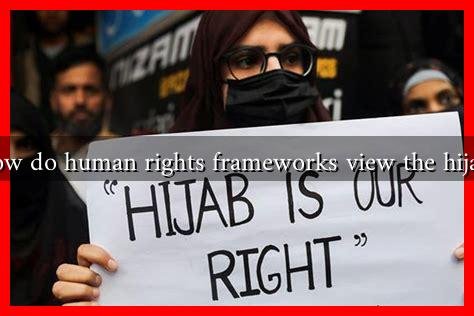-
Table of Contents
How Do Human Rights Frameworks View the Hijab?
The hijab, a traditional headscarf worn by many Muslim women, has become a focal point in discussions surrounding human rights, freedom of expression, and religious identity. As societies grapple with issues of secularism, multiculturalism, and gender equality, the hijab often finds itself at the intersection of these debates. This article explores how various human rights frameworks view the hijab, examining the balance between individual rights and societal norms.
The Right to Religious Expression
At the core of the discussion surrounding the hijab is the right to religious expression, which is enshrined in various international human rights instruments. The Universal Declaration of Human Rights (UDHR) states in Article 18 that everyone has the right to freedom of thought, conscience, and religion. This includes the freedom to manifest one’s religion or belief in teaching, practice, worship, and observance.
Similarly, the International Covenant on Civil and Political Rights (ICCPR) reinforces this right, emphasizing that individuals should be free to wear religious attire, including the hijab. The United Nations Human Rights Committee has also affirmed that restrictions on religious expression must be justified and proportionate.
Case Studies: The Hijab in Different Contexts
The interpretation and application of these rights can vary significantly across different countries and cultures. Here are some notable case studies:
- France: In 2004, France enacted a law prohibiting the wearing of conspicuous religious symbols in public schools. This law has been criticized for disproportionately affecting Muslim girls and women who choose to wear the hijab. The French government argues that the law upholds secularism, while critics contend that it infringes on individual rights.
- Turkey: Historically, Turkey has had a complex relationship with the hijab, particularly in public institutions. In 2013, the Turkish government lifted a ban on the hijab in public offices, a move seen as a significant step towards religious freedom. This change reflects a broader trend towards recognizing the rights of individuals to express their religious beliefs.
- Iran: In contrast, Iran mandates the wearing of the hijab for women in public. This law has sparked protests and debates about women’s rights and personal freedom. The Iranian government defends the law as a cultural and religious necessity, while many activists argue that it violates women’s rights to choose their attire.
Gender Equality and the Hijab
The hijab is often at the center of discussions about gender equality. Some argue that the hijab can be a symbol of oppression, while others view it as a form of empowerment and personal choice. The feminist perspective on the hijab is diverse:
- Oppression Argument: Critics argue that the hijab is often imposed on women, limiting their freedom and autonomy. In many cases, women may face social or legal repercussions for not adhering to dress codes.
- Empowerment Argument: Conversely, many women assert that wearing the hijab is a personal choice that allows them to express their identity and faith. For these women, the hijab can serve as a form of resistance against Western beauty standards and a declaration of their cultural identity.
International Perspectives and Recommendations
International human rights organizations have called for a balanced approach to the hijab, advocating for policies that respect individual rights while promoting social cohesion. The UN Special Rapporteur on Freedom of Religion or Belief has emphasized the importance of allowing individuals to wear religious attire without discrimination or coercion.
Furthermore, the Organization of Islamic Cooperation (OIC) has urged member states to protect the rights of Muslim women to wear the hijab freely, highlighting the need for policies that respect cultural and religious diversity.
Conclusion: Navigating the Complexities of the Hijab
The hijab remains a complex symbol within the discourse of human rights, embodying the tensions between individual freedoms and societal norms. While international human rights frameworks advocate for the right to religious expression, the practical application of these rights varies widely across different cultural and political contexts. As societies continue to evolve, it is crucial to foster dialogue that respects individual choices while promoting understanding and tolerance.
Ultimately, the conversation surrounding the hijab is not just about a piece of clothing; it is about the broader issues of identity, autonomy, and the ongoing struggle for human rights in a diverse world. For further reading on this topic, you can explore resources from the Office of the United Nations High Commissioner for Human Rights.

